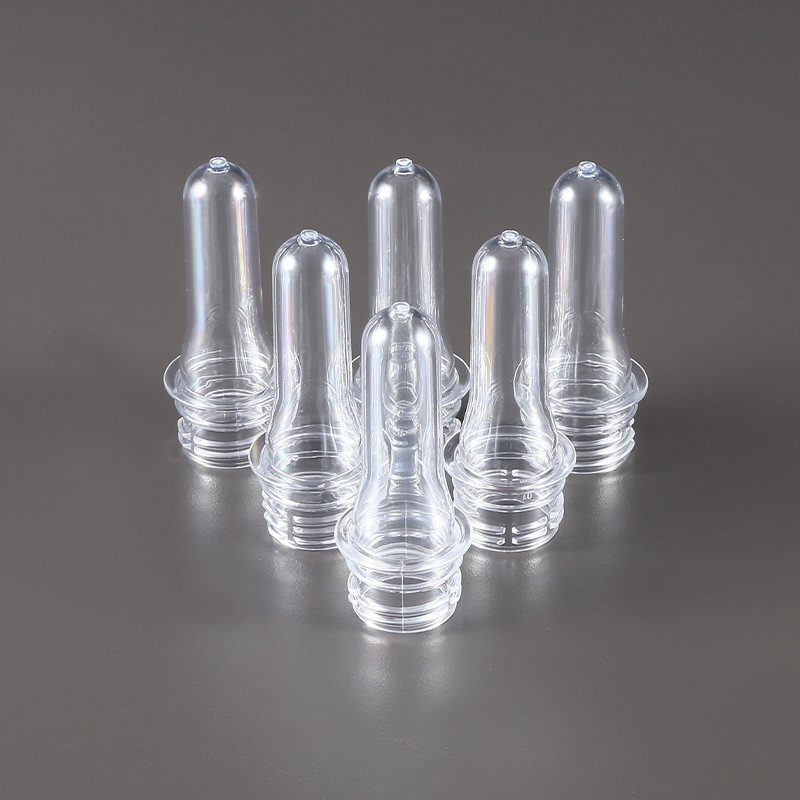PCO PET preforms are designed to meet specific standards for bottle neck finishes that are compatible with PCO closures, which are commonly used for carbonated soft drink bottles and water bottles. These preforms must conform to strict dimensional and material requirements to ensure compatibility with bottling lines and maintain product integrity.

A PET preform is a test-tube shaped piece of plastic made through injection molding. It undergoes a subsequent stretch-blow molding process, where it is heated and expanded into the final bottle shape.
Defining Yield Rate in PCO PET Preform Production
The yield rate refers to the proportion of acceptable, defect-free preforms produced relative to the total number of preforms manufactured within a production cycle or batch.
A high yield rate means a majority of preforms meet quality standards, while a low yield rate indicates a larger amount of defective or substandard products.
Significance of Yield Rate
The yield rate is a crucial performance indicator for manufacturers because it directly affects production costs, resource utilization, and delivery timelines. A high yield rate reduces waste and minimizes material consumption, thus lowering costs. Conversely, a low yield rate implies increased waste, higher raw material consumption, more downtime for troubleshooting, and potential delays in product delivery.
For manufacturers working with PCO PET preforms, maintaining a consistent and high yield rate is essential to remain competitive in a cost-sensitive and quality-demanding market.
Factors Affecting the Yield Rate of PCO PET Preforms
Several factors influence the yield rate during the production of PCO PET preforms. Understanding and controlling these factors can help manufacturers optimize output.
1. Material Quality
The raw PET resin quality is fundamental. Variations in molecular weight, moisture content, and contamination can impact the flow characteristics during injection molding. High-quality resin with consistent properties promotes better mold filling and reduces defects such as bubbles, warping, or incomplete molding.
2. Injection Molding Process Parameters
Key process parameters include temperature, pressure, injection speed, and cooling time.
Temperature: Proper heating of the resin ensures fluidity for uniform mold filling. Overheating can degrade the resin, while underheating can cause incomplete filling or weak preforms.
Pressure and Speed: Correct injection pressure and speed prevent short shots (incomplete preforms) and excessive flash (excess material around edges).
Cooling Time: Adequate cooling solidifies the preform properly. Insufficient cooling can cause deformation after ejection.
Optimizing these parameters through trial, measurement, and feedback loops improves yield.
3. Mold Design and Maintenance
Mold precision and condition greatly impact product consistency. A well-designed mold with accurate cavity dimensions ensures that preforms conform to required tolerances. Regular mold maintenance, including cleaning and inspection for wear or damage, prevents defects such as flash, dimensional errors, and surface imperfections.
4. Machine Performance
Injection molding machines must operate within specified tolerances. Malfunctions or inconsistent cycle times can introduce variability and defects, reducing yield. Machine calibration, timely servicing, and using advanced control systems help maintain steady production quality.
5. Operator Skill and Monitoring
Experienced operators can detect process deviations early and make necessary adjustments. Continuous monitoring and quality checks during production allow for timely intervention before defects accumulate.
6. Environmental Conditions
Ambient humidity and temperature can influence resin moisture levels and mold cooling efficiency. Proper environmental control within the production area supports stable production conditions.


 English
English Español
Español 中文简体
中文简体